Search results for 'painting'
-
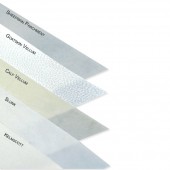
Kelmscott
Starting at: £19.55
Specially prepared to give a very smooth surface for painting or calligraphy.
Please note: This is a natural product that has been finished and cut by hand. As such, there may be slight variations in the surface and size of each piece.
Learn More -
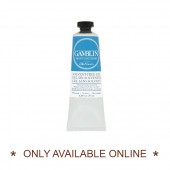
Gamblin Solvent-Free Gel
Starting at: £6.80
Gamblin Solvent-Free Gel is manufactured by the American company Gamblin. They write:
"Gamblin Solvent-Free Gel is the only solvent-free painting medium that supports a broad range of painting techniques with minimal compromise. Solvent-Free Gel gives colours more flow and transparency, yet holds the shape of your brushmark. Solvent-Free Gel has a moderately fast drying rate and increases gloss. Made from safflower oil and alkyd resin, Gamblin Solvent-Free Gel is non-toxic and contains no Gamsol or petroleum distillates. In comparison to other solvent-free mediums, Gamblin Solvent-Free Gel supports the broadest range of painting techniques with the least compromise across color, dry time, texture and mark-making. To ensure proper drying of paint layers, Solvent-Free Gel should be used in moderation with oil colors. No more than 25% by volume. To avoid wrinkling, apply mixtures of Solvent-Free Gel and oil colors thinly. To paint solvent-free, we recommend Gamblin Safflower Oil for cleaning brushes while you are working. After your painting session, brushes can be further cleaned using Gamsol and/or soap and water."
Learn More -
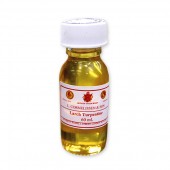
Cornelissen Larch Venice Turpentine
Starting at: £28.80
Venice Trupentine is a thick, resinous liquid extracted from the Larix decidua, a larch tree native to Austria. It can impart luminosity, brilliance and gloss when used in mediums and varnishes, and as such it was highly valued during the Golden Age of painting in Venice. It is a slow-drying balsam, which can be diluted with turpentine or placed in a bath of warm water to aid flow.
Learn More -
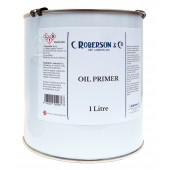
Roberson Oil Primers
Starting at: £23.30
Roberson's Traditional Oil Primer is made in small batches using the highest quality materials. Can be used on canvas or wood. Two to three coats will produce a slippery surface to enable oil colour to be moved around. Canvas should be sized before oil primer is applied using Roberson's Prepared Rabin Skin Glue. Touch dry in approx. 6h. hard dry in 24h. Paint may set in tin, shake tin and stir well before use, dilute with white spirit if desired. Prior to painting , primed canvases should be kept in daylight conditions to prevent over yellowing. Clean brushes in White Spirit. Learn More -
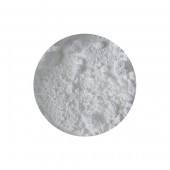
Zinc White Pigment
Starting at: £4.00
Zinc White, or Zinc Oxide, is an artificial mineral pigment that was first produced in France in the late 18th century. Its use in commercial watercolours as Chinese White pre-dates its inclusion in oil painting. It is a semi-opaque, lightfast pigment, which dries very slowly in oil. Of all white pigments, it produces the most brittle paint film, so is not recommended in large quantities for impasto techniques. However, it is a good addition to a palette which requires a less overwhelming white than Titanium White.
Toxicity: B
Learn More -
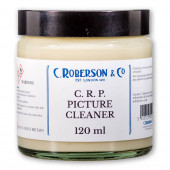
Roberson CRP Picture Cleaner
Starting at: £19.00
Cleansing/Reviving/Preserving wax paste for oil paintings, sculptures, any painted & polished surfaces except drawings, water colours or pastels. Learn More -
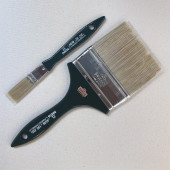
Omega Series 40 Varnish
Starting at: £6.90
Flat soft hog hair in cupro-nickel ferrule on short flat handle used for applying varnish to both oil and acrylic paintings. Also recommended for applying warm glue size and primers to all surfaces. Pure bristle / synthetic mix. Learn More -
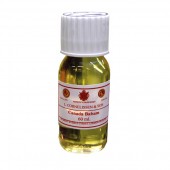
Cornelissen Canada Balsam
Starting at: £39.10
Canada Balsam is an oleoresin, meaning that it is a mixture of essential oils and resin. It comes from the fir tree Abies balsamea, native to Canada and the eastern states of North America. It is notable for its pale colour, clarity and gloss, making it a useful ingredient in recipes for oil-painting mediums.
Learn More -
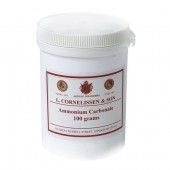
Ammonium Carbonate
Starting at: £9.70
Ammonium Carbonate is a highly Alkaline substance that reacts with the lactic acid present in casein to form a robust binder for tempera paints. It should only be used in a well-ventilated area, please see below for the Material Safety Data Sheet. Learn More -
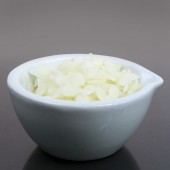
Bleached Beeswax
Starting at: £12.30
Beeswax is derived from melted honeycomb, and is available in two grades. Bleached Beeswax Pellets are white, having been bleached by the sun, and are an appropriate choice for using with pale colours, although they may revert to yellow over time. Natural Beeswax Pellets are yellow in colour, and offer a more flexible structure with a higher resin content. Beeswax has a melting point of 63-66°c, and may turn brown if over-heated. It is the most widely used wax in artists' materials, having a wide range of applications. Please see below for more details.
Learn More -
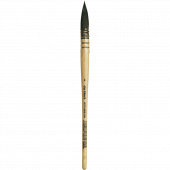
da Vinci Series 418 Squirrel PETIT GRIS PUR Watercolour brush
Starting at: £12.40
Wash brush, 'French' watercolour brush - Pure blue Russian squirrel hair - In plastic quills - No. 12 in goose quills - Transparent lacquered handles - For wash and watercolour painting on large areas - Finest Russian blue squirrel hair - Extraordinarily high colour absorbing capacity Learn More -
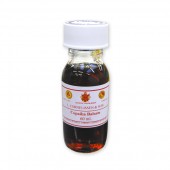
Cornelissen Copaiba Balsam
Starting at: £20.80
Copaiba Balsam comes from the South American tree Copaifera landsdorfii. Its primary function is to improve the appearance of paint layers that may have become dull, brittle or sunken upon drying. It is a viscous liquid that may be diluted with turpentine, but which should not be used in painting mediums.
Learn More -
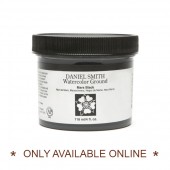
Daniel Smith Watercolour Ground Mars Black 4oz
£10.30Mars Black makes our Luminescent Watercolors “pop” and also provides an exciting, unexpected background for all your standard watercolour paints. Soft pastels, graphite and watercolour pencils show up beautifully on both the buff and black. *Please note, this product is stored offsite. Please allow extra time for your order to be processed and dispatched. Learn More -
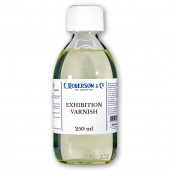
Roberson Exhibition Varnish
Starting at: £8.10
Apply to touch dry paintings as a temporary exhibition varnish. After 6 months a final picture varnish can be applied with no need to remove Ketone resin/white spirit. Unable to send overseas. Learn More -
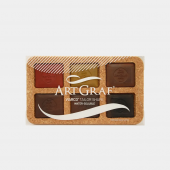
ArtGraf Tailor Shape Set of 6
£41.50Inspired by traditional tailor’s chalk block, prepared for drawing and painting. Water soluble and extremely soft, the set contains 6 traditional earth colours: sanguine, sepia, dark brown, brown, ochre and carbon black Learn More -
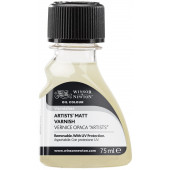
Winsor & Newton Artists' Matt Varnish
Starting at: £9.20
Ketone resin/silica/white spirit. Pale translucent liquid dries quickly to matt film. Can be mixed with Gloss Varnish to alter finish. Not suitable for highly absorbant cracked paintings. Learn More -
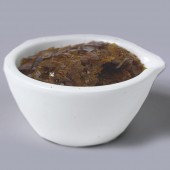
Lemon Shellac
Starting at: £8.20
Shellac is a natural resin that is deposited by the female lac insect on the branches of trees in India and Thailand. It is soluble with alcohol, but not with mineral spirits or turpentine. It forms a tough yet flexible film, with many applications. It is suitable as a top coat for gilding when applied thinly, a sealant for porous surfaces, an isolating layer for tempera paintings, a base for pigmented inks, a protective layer for collograph plates, and a warm varnish for wooden floors and furniture. As it is prone to darkening with age, it is not recommended as a varnish for oils, and its solubility can reduce over time. There are various grades of shellac. When mixed with alcohol, it may initially form a cloudy mixture, due to traces of wax in the shellac, but this should become clear once it has dried. The highest grades of shellac are Clear Dewaxed Shellac, which has been de-coloured using the carbon filtering method, Lemon Shellac, and Orange Shellac, which are pale in colour. Button Shellac is less refined and therefore produces a reddish varnish. It was, in fact, widely used as a red dye before synthetic dyes became available. Learn More -
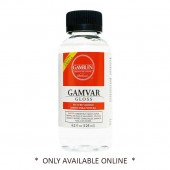
Gamblin Gamvar Varnish Gloss
Starting at: £15.20
Gamvar Picture Varnish saturates colors in your painting and gives your work a unified and protective surface. Developed in collaboration with the National Gallery of Art, Gamvar goes on water-clear, stays water-clear and can be easily and safely removed with Gamsol. Gamvar is virtually odorless and ready to apply. Brush apply. Do not spray. All Gamvar can be applied when the thickest areas of your painting are thoroughly dry and firm to the touch. Please visit our Video Demos page for additional information. Learn More -
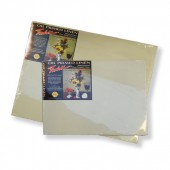
Primed Linen Panels
Starting at: £10.50
Hand-primed pure Belgian linen. Oil or Acrylic (universally) primed. Learn More -
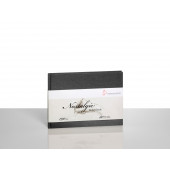
Hahnemuhle Nostalgie Sketchbook
Starting at: £9.30
Thread-stitched for a solid binding, this sketchbook features 190gsm, natural white paper. The smooth surface allows for clearly defined hatchings and pen work, as well as beautiful gradients of colour. Suitable for the use of all dry painting techniques in addition to wet colours. This versatile paper is encased in a linen surfaced grey hardback cover, with a red ribbon page mark. Acid free. Learn More -
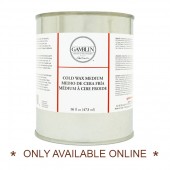
Gamblin Cold Wax Medium
Starting at: £12.60
* Only available online.* Cold Wax medium is made by Gamblin. They say:
"Cold Wax medium is made from naturally white, pure beeswax. Formulated to knife consistency, Cold Wax Medium makes oil colours thicker and more matte. Cold Wax Medium can be used to make Gamblin mediums and Gamvar more matte. It can also be applied alone as a matte varnish."
Please see below for more information.
Learn More -
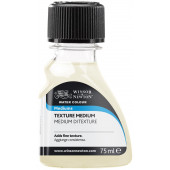
Winsor & Newton Texture Medium
Starting at: £9.25
Contains fine particles and is used to create the impression of depth and structure to watercolour paintings. Learn More
-

Maimeri Retouching Varnish Aerosol
Starting at: £14.95
Aerosol varnish for oil or acrylic paintings. For use as temporary varnish for paintings less than 6 months old. Unable to send overseas. Learn More -
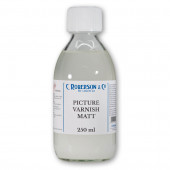
Roberson Matt Picture Varnish
Starting at: £8.70
Ketone resin/white spirit microcrystalline wax. Clear, tough protection without gloss. Useful overpaintings where resinous media have been used. Unable to send overseas. Learn More -
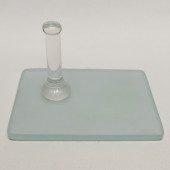
Cornelissen Mini Glass Muller and Slabs
Starting at: £24.00
Use Cornelissen Mini Glass Mullers in conjunction with a Cornelissen Glass Slab to make paint efficiently. The sand-blasted texture of the muller and plate helps to push and distribute the pigment throughout the binder quickly. This will mean less grinding, more painting! Learn More -
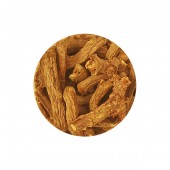
Madder Root Pieces
Starting at: £27.80
NR9
The madder plant was once widely cultivated for the red dye extracted from its roots. Its earliest known use is in ancient Egypt, and there is evidence of its widespread adoption in Europe from the medieval period. Madder Lake, the pigment that is derived from the root, has now largely been replaced by synthetic alizarin pigments, but it is still used as an ingredient in some commercial paints. It provides a very transparent pigment, with a weak tinting strength, which can be used in all lime-free media, although it is very slow-drying in oil. It is fugitive to sunlight, so paintings containing Madder should be stored appropriately, but it remains one of the most lightfast plant-based pigments.
Larger quantities are available by request.
Learn More -
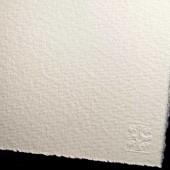
Saunders Waterford Paper
Starting at: £40.06
Saunders Waterford paper is a mould-made,100% cotton paper for watercolour painting with two deckle edges. Acid-free, gelatine tub-sized and calcium carbonate buffered.
Mail-order customers are able to buy this paper in packs of 10 sheets. Single sheets are also available in our shop.
Learn More -
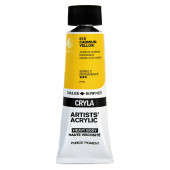
Daler-Rowney Cryla 75ml
Starting at: £9.05
Cryla Artists' Heavy Body colours are designed to retain the intended stroke when applied with a knife or brush, so they are ideal for highly textured impasto painting techniques. Learn More -
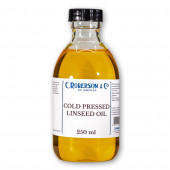
Roberson Cold Pressed Linseed Oil
Starting at: £7.50
Linseed Oil is derived from flax seeds, and appears on our shelves in many guises: Cold Pressed, Refined, Stand Oil, and as a key ingredient in many mediums. It has been appreciated for its drying properties since the Medieval period, and has become the most popular oil used in painting today due to the strong, flexible and glossy film that it creates. Cold Pressed Linseed Oil is ideal for the grinding of pigment to make oil paints. The process of producing Cold Pressed Linseed Oil results in a lower yield, but the resultant oil is of a superior quality to oil that has been extracted by other methods, creating a paint film that is more resistant to embrittlement on aging. Its yellow colour is caused by the high concentration of linolenic acid, the presence of which provides durability to the paint film. The amount of oil that each pigment requires can vary enormously. Alizarin Crimson, for example, requires a high percentage of oil compared to most other colours. We would always recommend mulling the pigment and oil together thoroughly to create a "short" or buttery paste, with evenly dispersed, well-coated pigment particles. This process contributes to the strength and flexibility of the paint film, and prevents the inclusion of excess oil. Origin: USA Learn More -
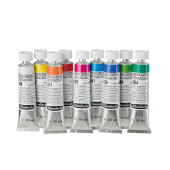
Schmincke Horadam Gouache
Starting at: £8.75
Finest quality gouache paints, available in 48 shades, all of which are fully inter-mixable with the HORADAM® WATERCOLOUR range. Made following a traditional gum arabic recipe, they are naturally opaque, without the addition of white. They provide a luminous, velvet-matte finish, drying to a slightly lighter shade than when wet.
Schmincke recommends the following:
"The application possibilities of HORADAM® GOUACHE are extremely versatile. Although it can be heavily diluted, gouache is mainly intended to provide opaque application of colour. Opaque, in this case, means that it is not impasto, because impasto application tends to produce cracking, unless the percentage of binder is increased by adding gum arabic (50302). While watercolour painting work goes from light to dark (the white paper is the light), in gouache painting, any process can be used. While “back painting” of lights is limited in watercolour painting, when working in gouache (and other opaque colours), light values and lights can be added later using colours."
Learn More





